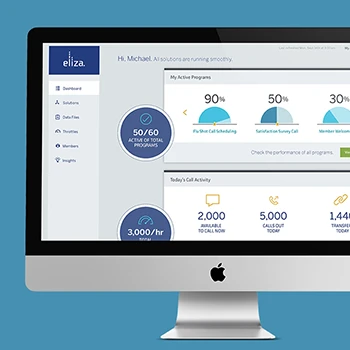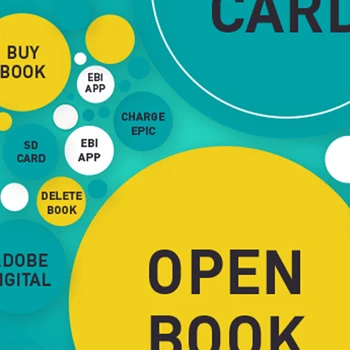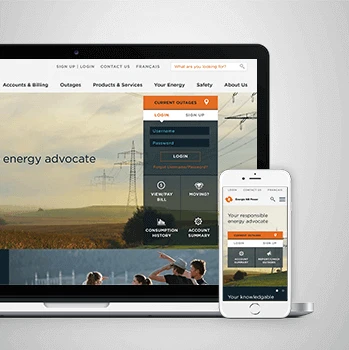What exactly are agile development sprints and how do they differ from traditional development?
Agile development sprints are time-boxed iterations that connect you with new opportunities and potential customers through rapid, iterative software development. Unlike traditional waterfall approaches that gather user feedback only at the beginning and end, sprint methodology incorporates continuous user involvement throughout the development process. Early development sprints focus on MVP and design concepts, allowing teams to collaborate and iterate toward solutions from ideation through development to testing. This approach eliminates the feedback gap that traditional development creates.
Tip: Start with shorter sprint cycles to establish rhythm and team confidence before extending to longer iterations.
Why do organizations choose sprint-based development over traditional project management?
Sprint-based development reduces risk by validating assumptions early and often, rather than waiting until project completion to discover problems. Through our Experience Thinking approach, sprints integrate user research, design validation, and technical implementation in coordinated cycles. This creates better alignment between business goals, user needs, and technical capabilities. Organizations see faster time-to-market, reduced development costs, and higher user satisfaction because problems are identified and resolved during development rather than after launch.
Tip: Document specific pain points in your current development process to measure how sprint methodology addresses these challenges.
How do agile sprints integrate user experience and business strategy?
Agile sprints work best when they incorporate user-centered design principles throughout each iteration. Rather than treating UX as a separate phase, sprint methodology integrates user research, usability testing, and experience validation into every development cycle. Through Experience Thinking, we ensure sprints address brand consistency, content strategy, product usability, and service delivery simultaneously. This holistic approach prevents the common disconnect between what users need and what gets built.
Tip: Include user research activities in your sprint planning to ensure development work is continuously validated against real user needs.
What types of projects benefit most from agile development sprints?
Projects with high uncertainty, evolving requirements, or innovative features benefit most from sprint methodology. This includes MVP development, digital product creation, software platform development, and complex integrations where user feedback is critical. Sprint methodology excels when you need to explore new opportunities, test market hypotheses, or iterate rapidly based on user response. Projects with fixed requirements and well-understood solutions may not require the overhead of sprint processes.
Tip: Evaluate project uncertainty levels and user involvement needs to determine if sprint methodology will provide sufficient value over traditional approaches.
How long should development sprints typically last?
Sprint duration depends on project complexity, team experience, and validation requirements. Most development sprints range from 1-4 weeks, with 2 weeks being the most common. Shorter sprints provide faster feedback but require more overhead for planning and review. Longer sprints allow for more substantial development work but may delay problem identification. The key is finding the rhythm that enables meaningful progress while maintaining rapid feedback cycles.
Tip: Start with 2-week sprints and adjust based on your experience with planning accuracy, development velocity, and feedback quality.
What's the difference between development sprints and design sprints?
Development sprints focus on building working software through iterative coding, testing, and deployment cycles. Design sprints concentrate on problem definition, ideation, prototyping, and user validation before development begins. Both follow iterative principles, but development sprints produce functional software while design sprints produce validated concepts and prototypes. The most effective approach often combines design sprints for concept validation with development sprints for implementation.
Tip: Use design sprints to validate concepts and reduce uncertainty before committing to development sprint cycles for implementation.
How do sprints handle changing requirements and scope?
Sprint methodology embraces changing requirements as a source of competitive advantage rather than a project risk. Each sprint includes planning sessions that reassess priorities based on new information, user feedback, and business changes. Requirements are managed through product backlogs that can be reprioritized between sprints. This flexibility allows teams to respond to market changes, user insights, and technical discoveries without derailing the entire project.
Tip: Establish clear processes for evaluating and incorporating requirement changes to prevent scope creep while maintaining necessary flexibility.
What role does user feedback play in agile development sprints?
User feedback is integral to sprint success, providing the validation needed to guide development decisions and priorities. Rather than the typical approach where user input only bookends the development process, sprints incorporate user feedback throughout each iteration. This includes usability testing during development, user acceptance testing at sprint completion, and continuous monitoring of user behavior with released features. Effective sprint methodology creates multiple touchpoints for user input at manageable periods throughout the development cycle.
Tip: Plan specific user feedback activities for each sprint rather than treating user involvement as an optional add-on to development work.
How do you structure sprint planning and goal setting?
Sprint planning involves defining clear, achievable goals for each iteration while maintaining alignment with overall project objectives. Planning includes story estimation, capacity planning, risk assessment, and success criteria definition. Through foresight design principles, we anticipate potential obstacles and build contingency plans into each sprint. Effective planning balances ambitious goals with realistic capacity, ensuring each sprint delivers meaningful value while building toward larger objectives.
Tip: Include buffer time in sprint planning for unexpected challenges and learning opportunities rather than packing sprints with back-to-back development tasks.
What's your approach to backlog management and prioritization?
Backlog management requires continuous refinement based on user feedback, business priorities, and technical discoveries. We use Experience Thinking principles to ensure backlogs address brand, content, product, and service needs holistically. Prioritization considers user value, business impact, technical complexity, and strategic alignment. Regular backlog grooming sessions keep priorities current and ensure development work focuses on the most valuable features and improvements.
Tip: Involve stakeholders from different business functions in backlog prioritization to ensure development work supports overall business strategy.
How do you estimate development work and manage sprint capacity?
Development estimation combines historical velocity data with complexity assessment and risk analysis. We account for research, design, development, testing, and documentation activities within each sprint. Capacity planning considers team availability, skill distribution, and external dependencies. Estimation accuracy improves over time as the development process stabilizes and historical data becomes more reliable. The goal is sustainable development pace that maintains quality while delivering consistent value.
Tip: Track estimation accuracy over time and adjust your planning processes based on actual development velocity and complexity patterns.
What planning methods work best for different sprint types?
Different sprint types require adapted planning approaches. Discovery sprints focus on research planning and hypothesis validation. Development sprints emphasize story breakdown and technical planning. Testing sprints concentrate on validation scenarios and acceptance criteria. Through our Design on Track framework, we match planning intensity to sprint complexity - simple sprints need lightweight planning while complex sprints require detailed preparation and risk assessment.
Tip: Customize your planning processes based on sprint objectives rather than using one-size-fits-all planning approaches for all sprint types.
How do you align sprint planning with broader business objectives?
Sprint planning must connect daily development work with strategic business goals through clear traceability from business objectives to sprint tasks. We use quarterly business reviews, monthly goal alignment sessions, and weekly priority assessments to maintain strategic focus. Each sprint contributes to measurable business outcomes, whether customer acquisition, user engagement, operational efficiency, or revenue growth. Strategic alignment prevents sprint work from becoming disconnected from business value.
Tip: Establish clear success metrics that connect sprint deliverables to business outcomes rather than just measuring development output and velocity.
What's your approach to managing dependencies between sprints?
Dependency management requires identifying cross-sprint relationships, external constraints, and integration points during planning phases. We create dependency maps that show how sprint outputs connect to future work and external systems. Risk assessment identifies critical path dependencies that could delay subsequent sprints. Proactive dependency management includes contingency planning, early integration testing, and stakeholder coordination to minimize blocking issues.
Tip: Map out critical dependencies at the beginning of sprint sequences rather than discovering blocking issues during development sprints.
How do you plan for technical debt and quality maintenance within sprints?
Technical debt management requires dedicating sprint capacity to code quality, refactoring, and infrastructure improvements alongside feature development. We allocate percentage-based capacity for technical debt reduction rather than treating it as optional work. Quality maintenance includes automated testing, code reviews, documentation updates, and performance optimization. Proactive technical debt management prevents quality erosion that can slow future development velocity.
Tip: Reserve 20-30% of sprint capacity for technical debt reduction and quality improvements rather than dedicating entire sprints to technical work.
What planning considerations are important for distributed sprint efforts?
Distributed sprint planning requires coordinating across time zones, communication preferences, and work cultures while maintaining team cohesion and shared understanding. Planning includes communication protocols, collaboration tool selection, and synchronization methods. We establish clear handoff procedures, shared documentation standards, and regular check-in schedules. Success depends on creating shared visibility into progress, blockers, and priorities across distributed participants.
Tip: Establish overlapping work hours and synchronous communication windows for critical planning and coordination activities rather than relying entirely on asynchronous communication.
How do you structure effective sprint roles and responsibilities?
Sprint success depends on clear role definition and shared accountability across product owners, development professionals, designers, and stakeholders. Through our Experience Thinking approach, we ensure representation across brand, content, product, and service perspectives in sprint planning and execution. Roles include sprint leadership, technical execution, user advocacy, quality assurance, and stakeholder communication. Effective role distribution balances specialization with cross-functional collaboration and shared ownership of sprint outcomes.
Tip: Define specific decision-making authority for each role to prevent confusion and delays during sprint execution.
What's your approach to cross-functional collaboration in sprints?
Cross-functional collaboration requires breaking down silos between development, design, product management, and business stakeholders. We create shared workflows, common success metrics, and collaborative decision-making processes. Daily standups, sprint reviews, and retrospectives include all relevant functions. Collaboration success depends on shared understanding of user needs, technical constraints, and business priorities. Everyone contributes their expertise while working toward common sprint goals.
Tip: Create shared workspaces and communication channels that include all sprint contributors rather than maintaining separate functional silos.
How do you manage stakeholder involvement and communication during sprints?
Stakeholder involvement requires regular communication without disrupting sprint focus and development flow. We establish communication protocols that provide transparency while protecting productive work time. This includes scheduled review sessions, progress updates, and escalation procedures for urgent issues. Stakeholder feedback is collected and prioritized for future sprint planning rather than immediately changing current sprint scope. Effective communication builds trust while maintaining development momentum.
Tip: Create stakeholder communication schedules that provide regular updates without requiring daily involvement in sprint activities.
What collaboration tools and processes work best for sprint methodology?
Sprint collaboration requires tools that support planning, progress tracking, communication, and artifact sharing across distributed participants. We use integrated platforms that connect project management, version control, testing, and deployment tools. Process standardization includes meeting formats, documentation templates, and decision-making frameworks. Tool selection prioritizes ease of use, integration capabilities, and scalability as sprint processes mature and expand across organizations.
Tip: Choose collaboration tools that integrate with your existing development infrastructure rather than requiring separate platforms for sprint management.
How do you handle conflict resolution and decision-making in sprints?
Sprint conflicts often arise around priorities, technical approaches, resource allocation, and timeline pressures. Resolution requires clear escalation procedures, decision-making authority, and conflict resolution protocols. We establish decision frameworks that consider user impact, business value, technical feasibility, and resource constraints. Quick resolution prevents conflicts from blocking sprint progress while ensuring important issues receive appropriate attention and consideration.
Tip: Establish clear decision-making hierarchies and escalation procedures before conflicts arise rather than trying to create processes during disputes.
What's your approach to knowledge sharing and documentation in sprints?
Knowledge sharing requires capturing decisions, lessons learned, and technical insights without creating documentation overhead that slows development. We use lightweight documentation approaches that capture essential information while maintaining development velocity. This includes decision logs, technical notes, user feedback summaries, and retrospective insights. Knowledge sharing prevents repeated mistakes and helps new participants understand sprint context and technical decisions.
Tip: Build documentation activities into sprint workflows rather than treating documentation as separate work that happens after development.
How do you build and maintain sprint culture and motivation?
Sprint culture requires celebrating progress, learning from setbacks, and maintaining focus on user value and business outcomes. We create recognition systems for sprint achievements, learning opportunities from challenges, and continuous improvement practices. Culture building includes retrospective practices, success celebrations, and professional development opportunities. Strong sprint culture sustains motivation through challenging periods and builds long-term commitment to agile practices.
Tip: Focus culture-building activities on learning and improvement rather than just celebrating completed features and development velocity.
What training and skill development support sprint success?
Sprint methodology requires skills in agile planning, collaborative problem-solving, user research integration, and adaptive project management. Training includes technical skills, process knowledge, and collaboration techniques. We provide ongoing skill development through workshops, mentoring, and hands-on sprint experience. Skill development addresses both individual capabilities and collective performance, ensuring the whole group can execute effective sprint methodology.
Tip: Provide agile methodology training for all sprint participants, not just development professionals, to ensure shared understanding of processes and principles.
What's your approach to daily sprint management and tracking?
Daily sprint management balances progress monitoring with productive work time through efficient standups, blocker resolution, and course correction. We track sprint burndown, quality metrics, and risk indicators without creating excessive overhead. Daily management includes identifying impediments, facilitating collaboration, and maintaining sprint scope integrity. The goal is keeping sprints on track while preserving focus time for development work and problem-solving.
Tip: Keep daily standup meetings focused on coordination and blocker identification rather than detailed status reporting that can be tracked through other means.
How do you integrate testing and quality assurance into sprint cycles?
Testing integration requires building quality assurance activities throughout the sprint rather than treating testing as a final step. We incorporate automated testing, continuous integration, user acceptance testing, and quality reviews into development workflows. Testing activities include unit testing, integration testing, usability testing, and performance validation. Quality assurance happens continuously, ensuring issues are identified and resolved quickly rather than accumulating technical debt.
Tip: Implement automated testing and continuous integration from the first sprint rather than adding quality processes after development practices are established.
What's your approach to managing sprint scope and preventing scope creep?
Scope management requires clear sprint boundaries, change control processes, and stakeholder alignment on sprint goals. We establish scope agreements at sprint initiation and maintain focus through regular progress reviews. New requirements are evaluated for urgency and impact, with most changes deferred to future sprints. Scope protection prevents sprint goals from being compromised while allowing for necessary adjustments based on discoveries and changing priorities.
Tip: Create a parking lot for new ideas and requirements that arise during sprints rather than immediately adding them to current sprint scope.
How do you handle technical challenges and blockers during sprints?
Technical challenges require rapid identification, escalation, and resolution to prevent sprint delays and quality compromises. We create support networks, expert consultation processes, and alternative solution approaches. Challenge resolution includes technical problem-solving, resource reallocation, and scope adjustment when necessary. Proactive challenge management prevents minor issues from becoming major blockers that compromise sprint success.
Tip: Establish technical support relationships and escalation procedures before encountering complex technical challenges during sprint execution.
What methods do you use for sprint review and demonstration?
Sprint reviews provide stakeholder feedback, user validation, and decision-making input for future sprint planning. We structure reviews to demonstrate working functionality, gather actionable feedback, and align on next priorities. Review formats include live demonstrations, user testing sessions, and stakeholder feedback collection. Effective reviews balance celebration of progress with honest assessment of remaining work and emerging requirements.
Tip: Include actual users in sprint reviews rather than just internal stakeholders to ensure feedback reflects real user needs and experiences.
How do you conduct effective sprint retrospectives and improvement?
Retrospectives create learning opportunities and process improvements by examining what worked well, what caused problems, and what could be improved. We use structured retrospective formats that encourage honest feedback and actionable improvement plans. Retrospective insights inform future sprint planning, process adjustments, and skill development needs. Continuous improvement through retrospectives helps sprint methodology evolve and mature over time.
Tip: Focus retrospectives on identifying specific, actionable improvements rather than general discussions about sprint experiences and challenges.
What's your approach to deployment and release management within sprints?
Deployment processes require coordination between development completion, quality validation, and release timing to minimize risks and maximize value delivery. We use deployment automation, staged release processes, and rollback procedures to ensure reliable releases. Release management includes stakeholder communication, user preparation, and post-release monitoring. Effective deployment processes enable frequent releases while maintaining system stability and user confidence.
Tip: Implement deployment automation and staging environments early in sprint processes rather than treating deployment as a manual, high-risk activity.
How do you measure and track sprint performance and outcomes?
Sprint performance measurement includes velocity tracking, quality metrics, user satisfaction, and business impact assessment. We monitor both output measures like story points completed and outcome measures like user engagement and business value creation. Performance tracking identifies trends, improvement opportunities, and success patterns. Measurement data informs sprint planning, process refinement, and strategic decision-making about agile methodology investment.
Tip: Track both leading indicators like sprint velocity and lagging indicators like user satisfaction to get complete perspective on sprint effectiveness.
How do you ensure sprints deliver measurable business value?
Business value delivery requires connecting sprint outputs to strategic objectives through clear success metrics and outcome tracking. Through our Experience Thinking framework, we ensure sprints contribute to brand strengthening, content improvement, product enhancement, and service delivery simultaneously. Value measurement includes user adoption, business performance, and strategic progress indicators. Each sprint should contribute to measurable improvements in customer satisfaction, operational efficiency, or revenue growth.
Tip: Define specific business metrics that each sprint should impact rather than just measuring development output and feature completion.
What's your approach to user value validation during sprint cycles?
User value validation requires continuous testing of assumptions about user needs, preferences, and behaviors throughout sprint development. We incorporate user feedback, usability testing, and behavior analytics into each sprint cycle. Validation methods include prototype testing, A/B testing, user interviews, and usage analytics. User value validation ensures development work addresses real user problems rather than assumed requirements or internal preferences.
Tip: Plan user validation activities for each sprint rather than waiting until feature completion to test user acceptance and value.
How do you balance technical debt reduction with feature development value?
Technical debt and feature development balance requires understanding how code quality impacts long-term value delivery and development velocity. We allocate sprint capacity to both new feature development and technical infrastructure improvement. Technical debt reduction enables faster future development and better user experiences through improved performance and reliability. Balance decisions consider immediate business needs with sustainable development practices.
Tip: Track how technical debt impacts development velocity and user experience to make data-driven decisions about technical debt reduction investment.
What methods do you use to prioritize high-value features and improvements?
Feature prioritization combines user impact assessment, business value analysis, and technical feasibility evaluation to identify the most valuable development opportunities. We use prioritization frameworks that consider user feedback, market research, competitive analysis, and strategic alignment. Prioritization includes both quantitative analysis and qualitative judgment about strategic importance and timing. High-value features solve important user problems while advancing business objectives.
Tip: Use multiple prioritization criteria including user impact, business value, and strategic alignment rather than relying on single metrics like revenue potential.
How do you measure and improve sprint return on investment?
Sprint ROI measurement requires tracking both development costs and value creation from sprint outputs. We measure development effort, resource allocation, opportunity costs, and delivered value through user adoption, business impact, and strategic progress. ROI improvement involves optimizing sprint processes, improving estimation accuracy, and focusing on high-value development opportunities. Long-term ROI tracking helps optimize agile methodology investment and resource allocation.
Tip: Establish baseline productivity and value metrics before implementing sprint methodology to measure improvement and ROI accurately.
What's your approach to scaling value delivery across multiple sprint efforts?
Value scaling requires coordinating multiple sprint efforts toward common objectives while maintaining individual sprint focus and quality. We use portfolio management approaches that align sprint work with strategic priorities and prevent duplicated effort. Scaling includes resource coordination, knowledge sharing, and integrated planning across sprint initiatives. Successful scaling maintains the benefits of focused sprint work while achieving larger strategic objectives.
Tip: Create coordination mechanisms between related sprint efforts rather than trying to manage all work through single, oversized sprint initiatives.
How do you communicate sprint value and progress to different stakeholders?
Stakeholder communication requires tailoring value reporting to different audience needs and decision-making responsibilities. Executives need strategic progress and business impact information. Product managers need feature status and user feedback data. Development groups need technical progress and integration information. Communication formats include dashboards, progress reports, and review presentations that highlight relevant value indicators for each audience.
Tip: Create stakeholder-specific communication formats rather than using the same progress reports for all audiences with different information needs.
What long-term value tracking and optimization strategies do you recommend?
Long-term value tracking requires monitoring how sprint outputs contribute to sustained business success and user satisfaction over extended periods. We track user engagement trends, business performance indicators, and competitive positioning improvements. Long-term optimization includes process refinement, capability development, and strategic adjustment based on accumulated learning and market evolution. Value optimization becomes a continuous improvement process rather than a one-time implementation.
Tip: Establish longitudinal tracking systems that measure sustained value delivery rather than just immediate post-sprint outcomes and satisfaction.
How do you scale sprint methodology across larger organizations?
Scaling sprint methodology requires adapting agile principles to organizational structure, culture, and governance requirements while maintaining the benefits of focused, iterative development. We develop scaling frameworks that coordinate multiple sprint initiatives, align resource allocation, and maintain consistent quality standards. Scaling includes training programs, process standardization, and cultural change management. Success requires balancing standardization with the flexibility that makes sprint methodology valuable.
Tip: Start sprint scaling with pilot programs in motivated groups rather than implementing organization-wide changes simultaneously.
What's your approach to coordinating multiple concurrent sprint initiatives?
Multiple sprint coordination requires portfolio management approaches that prevent resource conflicts, align strategic priorities, and enable knowledge sharing across sprint efforts. We use coordination frameworks that maintain individual sprint autonomy while ensuring overall coherence and integration. Coordination includes resource planning, dependency management, and communication protocols. Effective coordination amplifies individual sprint value through strategic alignment and shared learning.
Tip: Establish clear communication and coordination schedules between related sprint initiatives rather than trying to manage everything through centralized control.
How do you adapt sprint methodology for different project types and complexities?
Sprint adaptation requires understanding how project characteristics affect planning, execution, and coordination requirements. Simple projects may need lightweight sprint processes while complex initiatives require more structured coordination and risk management. Through our Design on Track framework, we match sprint methodology to project needs - using Steps for quick decisions, Sprints for focused development, Runs for extended work, and Relays for complex initiatives requiring multiple sprint sequences.
Tip: Assess project complexity and uncertainty levels to determine appropriate sprint structure rather than using identical processes for all development work.
What organizational changes support successful sprint scaling?
Sprint scaling requires organizational changes in decision-making authority, resource allocation, performance measurement, and cultural norms around experimentation and iteration. We help organizations adapt governance structures, communication patterns, and success metrics to support agile methodology. Organizational changes include role definitions, reporting relationships, and incentive systems that reinforce collaborative, iterative approaches to development work.
Tip: Address organizational culture and governance changes early in sprint scaling rather than trying to implement agile processes within unchanged organizational structures.
How do you maintain quality and consistency across scaled sprint operations?
Quality consistency requires standardized processes, shared quality standards, and continuous improvement systems across all sprint initiatives. We develop quality frameworks that maintain high standards while allowing for adaptation to specific project needs. Quality maintenance includes code standards, testing requirements, user experience guidelines, and documentation practices. Consistency enables knowledge sharing and resource flexibility across sprint efforts.
Tip: Create shared quality standards and review processes rather than allowing each sprint initiative to develop independent quality approaches.
What's your approach to resource allocation and capacity planning at scale?
Resource scaling requires sophisticated capacity planning that balances specialist expertise, cross-functional capability, and workload distribution across multiple sprint initiatives. We develop resource management approaches that optimize utilization while preventing burnout and maintaining quality. Resource planning includes skill development, knowledge transfer, and succession planning to ensure sustainable scaling. Effective resource management enables growth while maintaining individual sprint effectiveness.
Tip: Invest in cross-training and knowledge sharing systems to create resource flexibility across multiple sprint initiatives rather than creating rigid specialist assignments.
How do you measure success and ROI for scaled sprint operations?
Scaled sprint measurement requires portfolio-level metrics that aggregate individual sprint performance while identifying synergies and optimization opportunities. We track both individual sprint success and collective impact on strategic objectives. Measurement includes resource utilization, value delivery, quality indicators, and strategic progress. ROI analysis considers scaling benefits like knowledge reuse, resource flexibility, and accelerated capability development alongside individual sprint outcomes.
Tip: Develop both individual sprint metrics and portfolio-level indicators to understand scaling effectiveness rather than just aggregating individual sprint performance data.
How are emerging technologies changing agile development sprint practices?
Emerging technologies like artificial intelligence, machine learning, and automation are transforming sprint practices by enabling more sophisticated planning, faster development cycles, and enhanced quality assurance. Through foresight design principles, we help organizations prepare for AI-assisted sprint planning, automated testing, and intelligent resource optimization. Technology evolution requires adaptive sprint processes that can leverage new capabilities while maintaining human oversight and creative problem-solving.
Tip: Experiment with emerging technology tools in low-risk sprint activities before integrating them into critical development processes.
What's your approach to integrating AI and machine learning into sprint methodology?
AI integration in sprint methodology focuses on augmenting human decision-making rather than replacing professional judgment in complex development decisions. AI can enhance sprint planning through predictive analytics, improve quality assurance through automated testing, and optimize resource allocation through pattern recognition. We help organizations identify appropriate AI applications that improve sprint effectiveness while maintaining the collaborative and adaptive nature that makes agile methodology valuable. AI becomes a tool for better human decision-making rather than automated development management.
Tip: Start AI integration with data analysis and pattern recognition tasks rather than automated decision-making in complex development planning and problem-solving.
How do you prepare sprint processes for future technology evolution?
Future-ready sprint processes require flexible frameworks that can adapt to new technologies, changing user expectations, and evolving business models. Through foresight design approaches, we build adaptive capabilities that enable rapid response to technological change. Preparation includes experimental capacity, learning systems, and partnership strategies that provide access to emerging capabilities. Future preparation balances current optimization with evolutionary flexibility.
Tip: Allocate dedicated capacity for technology experimentation and learning rather than trying to integrate every new technology into current sprint processes.
What trends in user expectations are affecting sprint planning and execution?
User expectations for personalization, real-time responsiveness, and seamless experiences across multiple devices are driving changes in sprint planning and execution priorities. Modern users expect rapid feature updates, immediate problem resolution, and continuous service improvement. These expectations require sprint processes that can deliver frequent releases, respond quickly to user feedback, and maintain high quality standards under accelerated development cycles.
Tip: Monitor user expectation trends through ongoing research and feedback collection rather than assuming historical user requirements remain current.
How do you approach sustainability and long-term viability in sprint operations?
Sustainable sprint operations require balancing rapid delivery with long-term code quality, professional development, and organizational health. Sustainability includes preventing burnout, maintaining technical excellence, and building organizational capabilities that support continued agile evolution. Long-term viability requires investment in skill development, process improvement, and technology infrastructure alongside immediate feature delivery. Sustainable practices enable consistent sprint performance over extended periods.
Tip: Build sustainability metrics into sprint tracking rather than focusing solely on short-term delivery and velocity measurements.
What role will remote and distributed work play in future sprint methodology?
Remote work is driving evolution in sprint coordination, communication, and collaboration approaches while creating new opportunities for global talent access and flexible work arrangements. Future sprint methodology must accommodate distributed participants, asynchronous collaboration, and technology-mediated coordination. Remote work requires enhanced communication tools, modified meeting formats, and adapted team building approaches that maintain sprint culture and effectiveness across distributed groups.
Tip: Develop specific processes and tools for distributed sprint coordination rather than trying to adapt in-person sprint processes to remote work environments.
How do you stay current with agile methodology evolution and best practices?
Agile methodology continues evolving through practitioner experience, research insights, and technology advancement. Staying current requires ongoing learning, professional development, and experimentation with new approaches. We maintain connections with agile communities, research organizations, and innovative practitioners. Best practice evolution includes both proven approaches and experimental methods that show promise for improving sprint effectiveness. Continuous learning enables sprint methodology improvement and adaptation.
Tip: Participate in agile communities and professional development programs to access evolving best practices rather than relying solely on current experience and knowledge.












